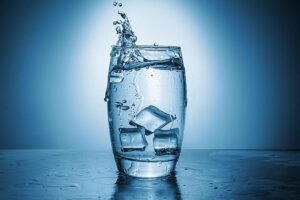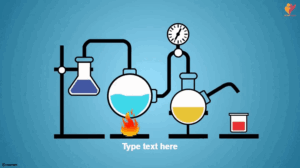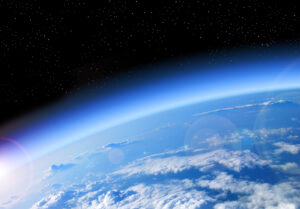WEATHERING

The term “weathering” refers to a collection of processes that lead to the breakdown of rocks, soil, and minerals, which ultimately results in the formation of sediment.
On the other hand, the disintegration or alteration of the rock surface while it is still in its natural or initial position. This happens because wind, water, and the weather cause or change physical, chemical, and biological processes.
The breakdown of rock material, known as weathering, is caused by a variety of physical, chemical, and biological processes, which can work independently or, more commonly, in concert with one another.
The application of force is required for the rock to undergo the mechanical disintegration that is caused by the physical decomposition of the rock. The process of weathering involves breaking up the rock into the minerals or particles that are currently forming without disturbing the minerals that are currently forming.
The expansion and contraction of heat, the erosion of overlapping materials, the release of pressure on the rock, alternatively the freezing and thawing of water, the dissolution of water between the cracks and cracks in the rock, and the growth of plants and organisms in the rock are the primary sources of weathering caused by physical processes.
Rock exchange typically entails a process of chemical deterioration, during which the rock’s mineral composition is changed, rearranged, or redistributed. Through the use of circulating water, rock minerals go through the processes of solution, carbonation, hydration, and oxidation. In addition to the effects of living organisms and plants acting as a source of nutrient extraction from rocks, these effects on the weathering of minerals also have an impact.
After the rock has been broken up, the fragments that are left cause soil to form from organic matter. Because the mineral content of the soil depends on the parent material, soil made from a single type of rock may be lacking in one or more minerals that are needed for good fertility.
On the other hand, soil that is well-aerated and made up of different kinds of rocks (like glacial, aeolian, or alluvial deposits) tends to be more fertile. In addition, the majority of the landforms and landscapes that can be found on Earth are the product of decomposition processes that are associated with erosion and re-accumulation.
Rock and mineral fragments are removed through a process known as erosion, which occurs after a rock has been shredded. There is not a single rock on earth that can withstand erosion.
The rocky terrain of the Earth is continuously being reshaped as a result of processes such as weathering and erosion. Over time, exposed surfaces will become worn and eroded due to wear. How susceptible a rock is to the effects of the weather is typically influenced by the length of time it has been exposed to those conditions. Rocks that are protected from the elements by being buried beneath other rocks, such as lava, are more resistant to wear and erosion than rocks that are exposed to wind and water.
It is the first step in the production of soil in weather conditions because of its ability to smooth out rough and jagged rock surfaces. Fragments of worn minerals are found mixed in with the remains of plants and animals, as well as fungi, bacteria, and other organisms.
The soil that is produced by the weathering of a single variety of rocks is typically unproductive, whereas the weathered materials that come from a collection of rocks are richer in mineral diversity and contribute to the production of more productive soil. The weathered rock mixture is associated with a variety of soil types, including untouched and alluvial deposits until they ice over.
Mechanical weathering vs. physical weathering
Physical weathering, also known as mechanical weathering or disaggregation, refers to a group of processes that cause rocks to break up without causing chemical change. Abrasion is the primary process in physical weathering (the process by which clips and other particles are reduced in size). Temperature, pressure, freezing, and other variables Physical weathering can occur for a variety of reasons. For example, cracks caused by physical weathering increase the surface area exposed to the chemical effect, accelerating disintegration.
Salt wedging occurs when dissolved salt in groundwater precipitates and grows as crystals in open pore spaces in rocks in arid climates. This process, known as salt wedging, pushes the surrounding grains apart and weakens the rock, causing it to disintegrate into separate grains when exposed to wind and rain. Along the coast, the same thing happens when salt spray percolates into rock and then dries.
Because water expands when the walls of a container freeze and push, freezing water blows pipes and breaks bottles. The same thing happens on the rock. When trapped water in a joint freezes, it forces the joint to open and may cause it to expand. These freezing wedges free the blocks from solid bedrock.
Thermal expansion occurs when the heat of an intense forest fire bakes a rock, causing the outer layer to expand. The layer contracts as it cools. This change causes enough force in the rock for the outer part of the rock to break off in sheet-like pieces. According to new research, the intense heat of the Sun’s rays sweeping across dark desert rocks may cause the rocks to fracture into thin slices.
Have you ever noticed how the roots of an old tree can rip up a sidewalk? Roots exert pressure on their surroundings as they grow and can push joints open in a process known as root wedging.
Animals: Burrowing creatures such as earthworms and gophers push open cracks and move rock fragments, which contribute to physical weathering. And, in the last century, humans have become perhaps the most active physical weathering agent on the planet. When we dig and blast to excavate quarries, foundations, mines, or roadbeds, we shatter and displace rock that would otherwise have remained intact for millions of years.
Weathering caused by chemicals
When water interacts with minerals to create various chemical reactions, it changes the composition of rocks, often transforming them. Chemical weathering is a slow and continuous process in which the mineralogy of the rock adapts to the near-surface environment. The original minerals of the rock give rise to new or secondary minerals. The processes of oxidation and hydrolysis are the most important in this. Chemical weathering is aided by geological factors such as the presence of water and oxygen, as well as biological factors such as acids produced by microbial and plant-root metabolism.
Mountain block uplift is important in exposing new rock strata to the atmosphere and moisture, allowing important chemical weathering to occur; significant Ca2+ and other ion release occurs into surface waters.
Dissolution is a type of chemical weathering in which minerals dissolve into water. Salts and carbonate minerals are the most affected by dissolution (Fig. B.6a, b), but quartz also dissolves slightly.
Water chemically reacts with minerals during hydrolysis, breaking them down (lysis means loosen in Greek) to form other minerals. Hydrolysis reactions in feldspar, for example, produce clay.
Oxidation: In rocks, oxidation reactions convert iron-bearing minerals (such as biotite and pyrite) into a rustybrown mixture of iron-oxide and iron-hydroxide minerals. Iron-bearing rocks can, in effect, “rust.”
Hydration: the absorption of water into the crystal structure of minerals causes certain minerals to expand, such as certain types of clay. This type of expansion weakens rock.
Weathering that is organic or biological
A variety of plants and animals can cause chemical weathering by releasing acidic compounds, for example, the effect of moss growing on roofs is classified as weathering. Soil microorganisms can also initiate or accelerate mineral weathering. Lichens on rocks are thought to speed up chemical weathering.
Some plants and animals can cause chemical weathering by releasing acidic compounds, for example, algae grown on the roof is classified as degradation. Soil microorganisms can also initiate or accelerate mineral weathering. Lichens on the rocks are thought to accelerate chemical weathering.
The release of chelating compounds (ie, organic acids, siderophores) and acidifying molecules (ie, protons, organic acids) to break down aluminum and iron-containing compounds in soils beneath plants is the most common form of biological weathering. The decomposition of dead plants in the soil can result in the formation of organic acids, which, when dissolved in water, cause chemical weather conditions. Excessive chelating compound release can easily affect the surrounding rocks and soils, resulting in soil podsolization.



